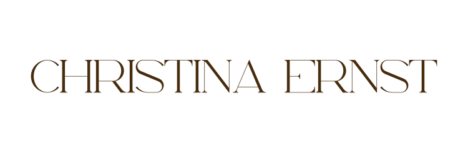Affiliate Disclosure
The idea of financial freedom
Financial freedom is a concept that fascinates many people. The idea that you have enough money to stop worrying is tempting and seems to be the solution to most problems. But is financial freedom really possible, or is it just a myth?
Fact or fiction?
The answer is: it depends. It is certainly possible to achieve financial freedom, but it requires smart and hard work, discipline and patience. There is no magic formula that guarantees that you will ever become “financially free”. In another article I went into the topic specifically in relation to the FIRE movement , which has been trending for several years.
The real question that anyone who wants to achieve financial freedom has to ask themselves is: “What does my personal version of financial freedom look like exactly, what sacrifices am I willing to make to achieve my personal variant of financial freedom and for how long?”
Planning for financial freedom
The first step on the path to financial freedom is to set a financial goal. As with other goals, this goal should be as SMART as possible – i.e. specific, measurable, achievable, relevant and time-bound (this comes from the so-called SMART method, in English SMART stands for specific, measurable, reachable and time bound).
For example, the goal might be to save enough money to pay off a mortgage within five years. It is important that the goal is realistic and can be achieved in a certain time frame. You should also define for yourself how high your own budget would actually have to be in order to feel financially free. Because that can be something different for everyone. Not everyone dreams of a sports car collection and a million-dollar mansion. Financial freedom certainly looks a little different for everyone.
Steps towards financial freedom
The next step is to create a financial plan that supports your budget and goal. The plan should take into account income and expenses, and include a strategy for increasing revenues and, at best, reducing expenses. It can be helpful to make a list of all monthly expenses to see where savings can be made. It may even be necessary or at least helpful to move to a cheaper apartment or drive a cheaper, used car to significantly reduce expenses. In fact, I did that a few years ago. First I drove an old used vehicle instead of a new car. after only two years I sold this car and since then I have completely renounced my own vehicle. Instead, I use car sharing. In addition, I moved into an apartment almost half the size, which was correspondingly cheaper than the apartment I had lived in before.
If you are really serious about fundamentally changing your own financial situation, especially if you might even want to become self-employed at the same time, which is often associated with financial restrictions, it can make sense to really drastically reduce your own expenses.
It may also make sense to find additional sources of income, such as a side hustle or an investment that generates passive income. But let’s be realistic, the thing with the investments only has a noticeable influence on our finances if the corresponding investment already has a not inconsiderable size. For example, investing €1000, or even €10,000, won’t really make anyone financially free within a few years.
Many, small steps or an alternative
Think about all the things you would do if you were financially free. It’s best to write them down. How would you live and where? Which car would you like to own, which vacations. How much would you realistically want to spend on shopping per month? And so on. Then, as mentioned above, you create a financial plan. What would this life cost you monthly? Then you will know how much you would have to earn to afford your version of financial freedom.
The next step is to think about some sources of income that could provide the required budget. You will find that it is more difficult to cover this with only one source of income. A very high income is harder to achieve than many small incomes.
Especially if the former is less likely for you to achieve because you may not have the necessary academic training for a high-paying job. Then concentrate your efforts from the beginning of the second approach. So you think about a number of types of income that together can cover your desired budget. And which would be fun for you at best. If it’s all about money, the work will tend to be harder for you and therefore less sustainable than if you really love what you do and are convinced of it. And then you put your plan into action. Step by step, you build up another source of income one after the other. Depending on the situation, you will have achieved your financial freedom even faster with this strategy than the alternative FIRE type. And in the best case, have a great time.
Investment
Only when you get this far will investments be able to make a noticeable difference. Investments, of course, can help increase wealth and generate passive income. But after all, we’re not talking about spending a few bills for 60 years in order to experience a pleasant retirement at some point. No, we are talking about financial freedom as soon as possible. Compound interest doesn’t help either. However, it is important to learn about the different types of investments and develop a personal strategy that fits your risk profile and financial goals. Even if you may not be able to implement them immediately, but only a few years later, it does not hurt to deal with investments and investment strategies. But I think Step 1 and 2 can only be to become debt-free (mainly consumer loans) and significantly increase income.
Then you can start investing the available budget. There are many different types of investments, such as stocks, bonds, real estate and companies, art and, for some time, cryptocurrencies. However, the latter is definitely a very risky investment and hardly predictable, which is why I can’t really advise anyone to do it. It is important to properly inform yourself about the advantages and disadvantages of each type of investment and to develop a strategy that fits your risk profile and financial goals.
By the way, it can be helpful to think outside the norm. The strategies that every financial Youtuber preaches are not necessarily the best strategies. Often, people just copy each other more and more, I have the impression.
Example investment in real estate
In terms of real estate, this could mean, for example: Do not buy an apartment in an area that is already very expensive. Even though real estate prices have continued to rise in such areas for a long time and the broker may advise you to do so, at some point they all reach a plateau.
A real increase in value is no longer achieved with these properties and if the tenant does not pay or moves out, a significant source of income, at least temporarily, fails. It may therefore be advisable to invest in a cheaper property, in an up-and-coming area, or in several smaller units. So instead of an expensive apartment for, let’s say, €100,000 in city A, look for 5 apartments for €20,000 each in the vicinity of said city where you want to invest. Or rather, it is better to buy an entire house. WEG (condominium associations) are quite complex and you have hardly any freedom of decision. Larger multi-family buildings are also potentially more expensive to maintain than a smaller building with, let’s say, a total of 5 units. The so-called risk of loss of rent is correspondingly lower with 5 rented residential units. When you move out, you only lose a share of the rental income.
Bad investments
In general, it is better to diversify the investment. In addition, the property should definitely be able to support itself. Pay attention to a positive Chash flow. I’ve seen this error so many times. People buy expensive apartments or houses as an investment, take out a loan for them, which they have to pay off for thirty years. The installments for this significantly exceed the rental income and they pay on it for thirty years, only to have to take out a new loan at the end because the maintenance reserve cannot cover the modernization measures that are now necessary. For example, because a new heating system is due or the apartment or house needs to be completely renovated.
On the other hand, they had less money and more work every month for thirty years, because they probably managed the whole thing themselves. In addition, they paid income tax on the rental income because they made the investment as a private individual and all this only in the prospect of increasing their own pension and because someone told them that it was a good investment. Maybe the property has at least increased in value, but you don’t have a guarantee for that. Also, not that you live so long that you can reap the “fruits” of this investment at some point.
When it comes to investments, the numbers should be right and they are usually not right at all in such an investment. Above all, this also means that they are right every month, right from the start. Not hypothetically in 30 or more years. I will go into more detail about this in a separate article. In any case, the fact is, it is not always advisable to do what everyone else is doing. Because you usually only achieve what everyone else achieves and financial freedom is probably not. Otherwise, we would probably all already be financially free.
Result
In conclusion, financial freedom is not a myth, but an achievable goal that requires discipline, hard work, and patience. It also requires a clear definition of financial goals, a well-thought-out financial plan, and a careful investment strategy. However, those who make the effort to achieve their own financial freedom will be rewarded with a life without financial worries. It’s never too late to start working towards this goal, and there are plenty of resources and support that can help. We are a generation that has access to immense knowledge and opportunities that our ancestors did not have. However, achieving one’s own financial freedom requires consistent implementation of one’s own financial plan and continuous monitoring of progress. It certainly requires a lot of patience and perseverance, as in most cases it can still take many years to reach the goal.
I wish you a successful week.
All the best,
Christina
“You can’t run after money, you have to go towards it.”
Aristotle Onassis

Ich freue mich,
meine Neuigkeiten mit euch zu teilen!
Möchtet ihr Infos zu meinen neuesten Artikeln und den interessantesten Themen rund um Unternehmertum, Finanzen, Immobilien und Persönlichkeitsentwicklung direkt in eure Mailbox bekommen?
Dann meldet euch für meinen Newsletter an!
Ich würde euch gerne auf dem Laufenden halten.
About the author

Christina Ernst is the founder and CEO of Linen & Quince. She is also a designer, writer and real estate expert. She shares her experience and knowledge not only in her personal blog on christinaernst.net , where she writes about financial literacy, business start-ups, real estate knowledge and personal development, but also on our Linen & Quince blog. There she regularly writes about interior design, fashion and lifestyle topics. She loves interior design, art, antiques as well as elegant, sustainable and high-quality fashion.



